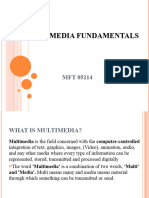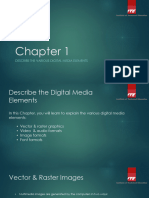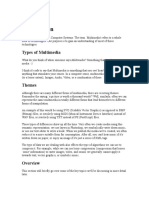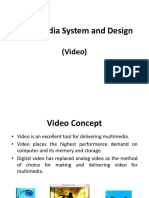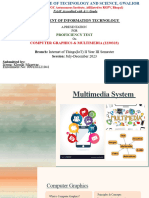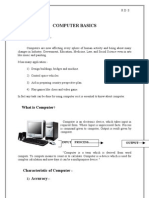0% found this document useful (0 votes)
46 views6 pagesMultimedia Assignment
The document discusses the core concepts of animation, graphics, and multimedia technologies, emphasizing the importance of these elements in modern communication and entertainment. It covers various types of animation, key software tools, the significance of graphics, and the differences between raster and vector graphics, as well as analog and digital media formats. Additionally, it highlights the distinctions in quality, storage, and editing between analog and digital video and audio.
Uploaded by
aditithkr845Copyright
© © All Rights Reserved
We take content rights seriously. If you suspect this is your content, claim it here.
Available Formats
Download as DOCX, PDF, TXT or read online on Scribd
0% found this document useful (0 votes)
46 views6 pagesMultimedia Assignment
The document discusses the core concepts of animation, graphics, and multimedia technologies, emphasizing the importance of these elements in modern communication and entertainment. It covers various types of animation, key software tools, the significance of graphics, and the differences between raster and vector graphics, as well as analog and digital media formats. Additionally, it highlights the distinctions in quality, storage, and editing between analog and digital video and audio.
Uploaded by
aditithkr845Copyright
© © All Rights Reserved
We take content rights seriously. If you suspect this is your content, claim it here.
Available Formats
Download as DOCX, PDF, TXT or read online on Scribd
/ 6























